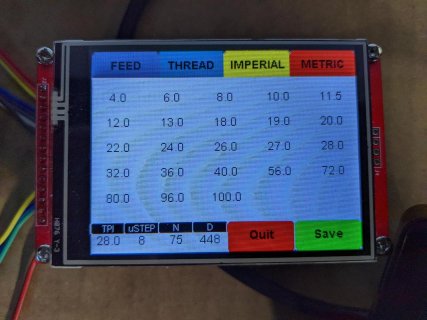Hi all.
I'm getting crazy with this issue: I'm trying to work with a resistive TS (driven by a XTP2046) installed on a cheap TFT (ILI 9488, 480x320) but I' m loosing my mind since yesterday.
Yesterday I received the display, connected it and started to develop immediately, but when it came to use the TS i did not understand which pins I've to connect.
I tried several different libraries, the first one was Paul's touchscreenXP2046 but I didn't understand where I have to connect MOSI, MISO and CLK (TDI, TDO and TCK on my display connector).
I assume that I have to connect a separate and unique CS pin for the touchscreen on TEENSY 4.1 (and I've chosen the pin 0 for TS and pin 21 for TFT), because the CS addresses each SPI peripheral using the respective channel, but AFAIK ILI9488 does not allow to share its MISO, MOSI and TCK with any other device as it does not allow 3state pins
I've chosen (and reserved) the following pins for TS on the Teensy4.1 board:
CS1: 0
MISO1 1
MOSI1 26
SCK(TCK) 27
IRQ(PEN) 28
I cannot freely choose the pins on Teensy, as I'm already using two MPU6050s, a voice/audio board (WT588D), a bluetooth (serial) device and a high speed ADC (2 channels, 100MHz, that requires 10 parallel bits/pins for each channel)
...is it possible to get a library that allows the developer to freely choose the SPI pins for the touchscreen?
ps. I tried to share MISO, MOSI and SCK with the TFT too, but it didn't work of course.
besides I'm using the following pins for the TFT:
CS: 10
MOSI: 11
MISO: 12
SCK: 13
RST 23 (I connected it using a 4.7K resistor to the pin 23 and pulled it always high in my sketch)
it got it work flawlessly in less than 5 minutes.
If I get the TS work on an example program, I can study its behavior on the example and then develop the sketches of my project.
thank you
Romano
I'm getting crazy with this issue: I'm trying to work with a resistive TS (driven by a XTP2046) installed on a cheap TFT (ILI 9488, 480x320) but I' m loosing my mind since yesterday.
Yesterday I received the display, connected it and started to develop immediately, but when it came to use the TS i did not understand which pins I've to connect.
I tried several different libraries, the first one was Paul's touchscreenXP2046 but I didn't understand where I have to connect MOSI, MISO and CLK (TDI, TDO and TCK on my display connector).
I assume that I have to connect a separate and unique CS pin for the touchscreen on TEENSY 4.1 (and I've chosen the pin 0 for TS and pin 21 for TFT), because the CS addresses each SPI peripheral using the respective channel, but AFAIK ILI9488 does not allow to share its MISO, MOSI and TCK with any other device as it does not allow 3state pins
I've chosen (and reserved) the following pins for TS on the Teensy4.1 board:
CS1: 0
MISO1 1
MOSI1 26
SCK(TCK) 27
IRQ(PEN) 28
I cannot freely choose the pins on Teensy, as I'm already using two MPU6050s, a voice/audio board (WT588D), a bluetooth (serial) device and a high speed ADC (2 channels, 100MHz, that requires 10 parallel bits/pins for each channel)
...is it possible to get a library that allows the developer to freely choose the SPI pins for the touchscreen?
ps. I tried to share MISO, MOSI and SCK with the TFT too, but it didn't work of course.
besides I'm using the following pins for the TFT:
CS: 10
MOSI: 11
MISO: 12
SCK: 13
RST 23 (I connected it using a 4.7K resistor to the pin 23 and pulled it always high in my sketch)
it got it work flawlessly in less than 5 minutes.
If I get the TS work on an example program, I can study its behavior on the example and then develop the sketches of my project.
thank you
Romano



